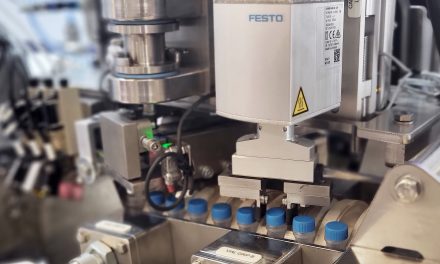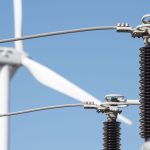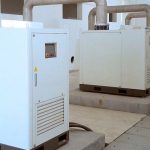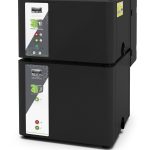 Despite often being viewed as completely separate functions, it makes sense for designers and manufacturers to look at integrating EMC and environmental testing in the product development lifecycle. Jean-Louis Evans, managing director at TÜV Product Service explains
Despite often being viewed as completely separate functions, it makes sense for designers and manufacturers to look at integrating EMC and environmental testing in the product development lifecycle. Jean-Louis Evans, managing director at TÜV Product Service explains
Electromagnetic fields are as much a part of the environment which interacts with a product as temperature, shock, vibration, dust and water ingress. And, environmental factors will have a considerable influence over ongoing EMC performance during the lifecycle of a product.
 Examples include screws working loose due to vibration, EMC shielding being degraded due to distortion of panels or fixings over time, as well as moisture ingress and corrosion affecting product bonding. Any of these can impact on a product’s EMC performance and integrity which in turn will have reliability and safety implications. Lifetime reliability is therefore best assured by simulating product ageing before EMC testing is done to ensure that the results present a more realistic picture of a product’s lifetime performance.
Examples include screws working loose due to vibration, EMC shielding being degraded due to distortion of panels or fixings over time, as well as moisture ingress and corrosion affecting product bonding. Any of these can impact on a product’s EMC performance and integrity which in turn will have reliability and safety implications. Lifetime reliability is therefore best assured by simulating product ageing before EMC testing is done to ensure that the results present a more realistic picture of a product’s lifetime performance.
While there are no regulatory requirements to artificially age a product prior to EMC testing, manufacturers that want to ensure that their consumer products are of a high quality could learn from those that supply the defence and aerospace markets, as these often have a contractual requirement for EMC integrity over a defined lifespan.
With such ‘mission critical’ products, there are three factors that are integral to ensuring lifetime EMC integrity when equipment is still generally tested only once. Firstly, in these markets stress screening is often carried out prior to EMC testing. Secondly, products are tested against a defined build standard, and that standard is maintained through the quality management process. Thirdly, a well defined maintenance schedule, including visual and insulation resistance checks, ensures that there is regular surveillance of components that will affect the EMC performance of a product.
 Preparation of a safety case in the rail industry similarly takes into account both environmental and EMC issues. One thing to remember however, is that while maintenance packages are designed to optimise ongoing compliance, upgrades and refurbishments can also create uncertainties.
Preparation of a safety case in the rail industry similarly takes into account both environmental and EMC issues. One thing to remember however, is that while maintenance packages are designed to optimise ongoing compliance, upgrades and refurbishments can also create uncertainties.
For example, train owners may secure regulatory and contractual compliance at the outset, but train operators can make changes, such as introducing passenger information systems, which may compromise the product’s EMC performance. Over a number of years of use, the product’s EMC performance may change significantly.
The automotive industry is another area where performance and safety can be impaired by changes in the electromagnetic environment induced by insufficient attention during servicing, or the addition of product enhancements not essential to its core function.
If there are grey areas, even in applications where the safety of people is a high priority, how many more are there in the commercial world, where competitive pressures can prompt some manufacturers to cut corners in their testing practice?
Commercial view
EMC testing of conditioned samples remains unusual outside of safety critical applications as environmental testing in that arena usually relates only to packaging and transportation. Due to cost and time to market issues, stress screening is also often ruled out.
There is anecdotal evidence to confirm that environmental factors can actually jeopardise EMC over a product’s lifetime. There are documented cases where motorbikes and cars have stalled in the vicinity of cellular base stations, and radio key fobs refused to work. The worst case scenario is that the impaired EMC performance of electronics jeopardises safety. For example, roadside and trackside signals and signs can be affected by harsh environmental conditions that can influence EMC performance with the potential to create a hazard.
Even when mid-life impaired EMC is no risk to safety, value can be added by designers who ensure ongoing performance reliability of their products. Eliminating the inconvenience of breakdowns will extend warranty periods and gain a competitive advantage.
A design for life
When considering lifetime performance, reliability and safety issues, environmental and EMC testing should not be thought of as isolated events. Lifetime compliance for quality products will in fact be best achieved if environmental and EMC requirements are considered together from the outset.
One route that will provide manufacturers with information on a comprehensive, cost effective approach to testing for lifetime compliance is to consult with a testing advisory service during the early stages of design. It should also lead to a product lifecycle review which will highlight any measures required down the line to maintain a product’s compliance.
By these means, designers and manufacturers can increase the value of EMC testing, helping to ensure that the EMC integrity of their products will last a lifetime, thereby enhancing their reputation for reliability in their marketplace, and minimising the risk of litigation.
TÜV Product Service
T: 01489 558 100





